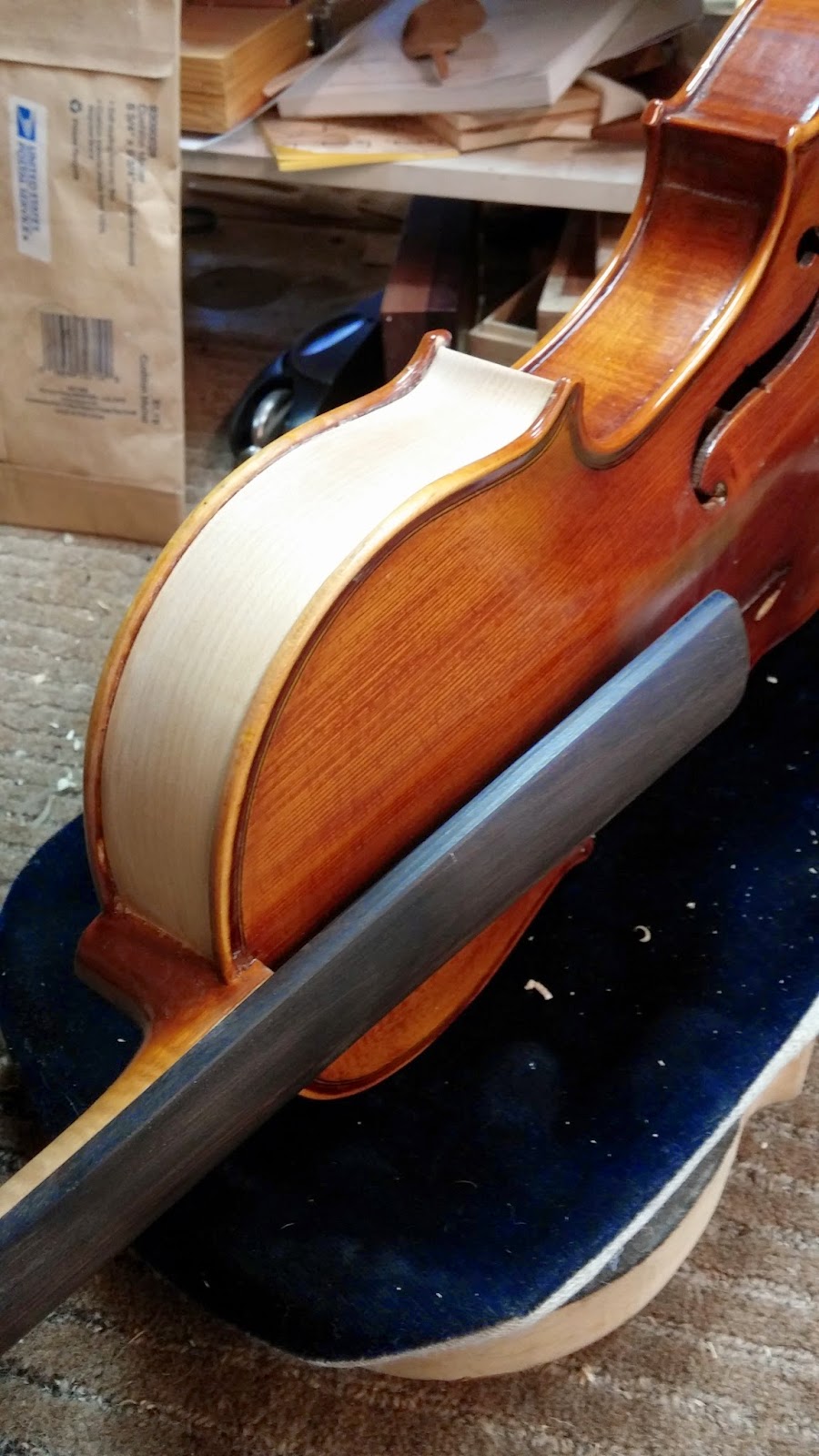The photos were small and every attempt to blow them up reduced their quality so i was forced to use blurry photos for the measurements. Although that did not create any real problems it certainly was not easy.
From the basic measurements of the body the tailpiece dimensions were easily determined after scaling up the photos. The curves of the sides of the tailpiece I traced from an older English (?) style tailpiece. The tailpiece seen in the right of the photo which I was hoping to copy directly turned out not to have any measurements that matched the scaled drawings.
I did have two photos that showed the tailpiece from the endpin view. That angle provided important information about its thickness and general curves.
The photo above shows the tailpiece after initial shaping and drilling. I cut the piece a bit wide so as to be able to change the shape slightly from the original if needed. I wouldn't know if my measurements were correct until the shaping began. I was worried that the perspective might be skewed so I was ready to rely on my eye for the final shaping if something didn't look correct as I cut it to the final shape (I have only one photo that shows the tailpiece perfectly straight on and unfortunately it is also the worst photo I have of the instrument.
I did the initial radiusing with a Foredom rotary tool. I used a medium grit carbide burr. All shaping after that was done by hand using sandpaper and files.
This is the tailpiece ready for the inlay work to begin. The radius was going to create some problems with the ivory or bone inlay. I had to cut the inlay pieces extra thick to compensate for the curves. I worked with both bone and ivory for the inlay and the ivory simply looked, and matched the photos, better. (A serious footnote: the ivory was a scrap just large enough for those two inlays, as you can see in the photo below, and was probably 50 years old, my guess was it was cut from an old gun grip. I would not normally work with ivory and am against its use, sale, and trade of any kind in the marketplace. I made an exception for this as it was honestly an old broken scrap.)
The inlays were cut using a jeweler's saw with an extremely fine blade. After cutting, the inlays were glued temporarily to the surface, carefully traced with a fine tanto pointed knife, and then removed with a painter's spatula. I cut the cavity using both a Dremel tool at 25,000 rpm and a .5mm burr, and a series of knives to make the edges absolutely crisp. The inlays were a perfect fit. After gluing and light sanding using papers starting at 400 grit and working up to 1000 grit, I oiled and french polished the entire surface.
The above photo is the finished piece as delivered to the customer. It will be installed on the reproduction violin upon completion of that project. Thank you for reading, John Orth
Orthwest Studios














.jpg)





